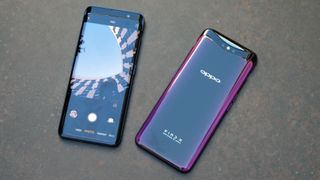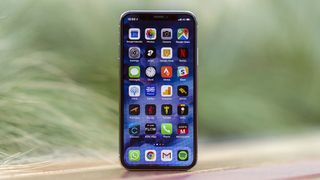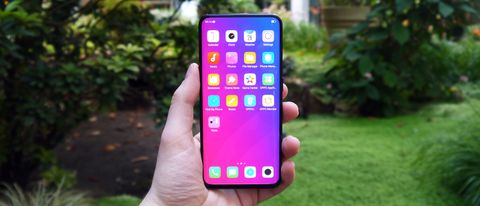Why you can trust TechRadar
Verdict
While the Oppo Find X succeeds in pushing the boundaries of the modern smartphone, it does so at the expense of many staples that we’ve come to expect from a contemporary flagship.
The Find X doesn't have NFC, a headphone jack, waterproofing, a microSD card support or a fingerprint scanner. It could be forgiven for lacking any one of these features, but the sum total of these absences doesn't bode well against its premium competition.
The internals of the Find X make for a really capable phone – Snapdragon 845, 8GB of RAM and an Adreno 630 GPU is a deadly combo – but it’s a shame Oppo’s ColorOS is still a little intrusive.
If Oppo had gone a more traditional route and swapped the pop-up camera and bezel-free design in exchange for some of those omitted hardware features, the Find X's immense performance capabilities and sleek design could have cemented it as a premium alternative to Samsung and Apple flagships.

Who's this for?
If you’re not necessarily chasing a flagship with a fingerprint scanner, headphone jack, microSD card slot, NFC, or waterproofing, then the Find X is going to be a much more appealing prospect for you.
If you already treat your phone like a newborn child, many of the longevity and fragility concerns will likely be outweighed by the handset’s gorgeous aesthetic, and for those that need a powerful phone, there are few more capable on the market at present.
Should you buy it?
Considering this is the first (of many, we predict) handset to hit the Western market with the bezel-free display and pop-up camera combo, there’ll likely be a few kinks ironed out in future products with the same format. If you can wait, then, subsequent handsets will likely improve the formula and reduce the number of compromises that need to be made.
If you’re keen on jumping on the trend early, however, then the Find X certainly has plenty of selling points. If the design appeals to you and the missing hardware features aren’t going to bother you, this is a powerful and pretty device that’s slightly ahead of the design-curve.
Samsung Galaxy Note 9

If it’s the best-of-the-best you’re looking for, then the Galaxy Note 9 is the pinnacle of Android handsets right now. Instead of worrying about notches or novelties, the Galaxy Note 9 packs in top-end specs and a gorgeous display into Samsung’s trademark sleek chassis.
In Australia, there’s a considerable price difference between the Find X and even the lowest-capacity Note 9 (it's $1,099 for the Oppo versus $1,499 for the Samsung), but the difference likely won’t be quite as wide in other geographic regions.
Read our full Samsung Galaxy Note 9 review here
iPhone X

Oppo’s ColorOS clearly takes some interface and design queues from Apple’s own iOS, so if you’re chasing that Apple aesthetic with an expansive display, the iPhone X is the clear choice.
Obviously, you’ll have to deal with the iconic notch – love it or hate it – and there’ll be a similar jump in price as you’d find from the Find X to the Note 9, but this is your best choice if you’re dead-set on an authentic Apple experience.
Read our full iPhone X review here
Huawei P20 Pro

For a similar price, the Huawei P20 Pro offers much the same performance and prettiness as the Find X while dropping its gimmicky camera. A powerful performer with a triple-lens rear camera and top-notch specs, this is probably the best non-Samsung Android going at the moment.
Unlike its competitors, Huawei flagships drop in price a tad quicker, so if you’re able to snatch this up for slightly less, it’s one of the most compelling handset offerings on the market at the moment – especially if you’re after an iPhone X aesthetic with Android functionality.
Read our full Huawei P20 Pro review here
- Direct competition: read our hands on Vivo Nex review

John joined TechRadar over a decade ago as Staff Writer for Phones, and over the years has built up a vast knowledge of the tech industry. He's interviewed CEOs from some of the world's biggest tech firms, visited their HQs and has appeared on live TV and radio, including Sky News, BBC News, BBC World News, Al Jazeera, LBC and BBC Radio 4. Originally specializing in phones, tablets and wearables, John is now TechRadar's resident automotive expert, reviewing the latest and greatest EVs and PHEVs on the market. John also looks after the day-to-day running of the site.

The next HomePod could be more like a soundbar according to this Apple patent – and it hints at fixing the HomePod 2’s biggest issue

Adobe's next big project is an AI that can upscale low-res video to 8x its original quality

Over a billion users could be at risk from keyboard logging app security flaw
